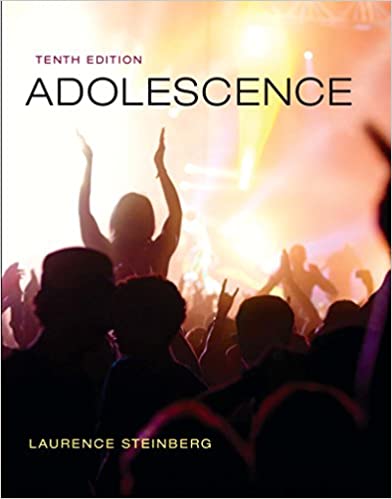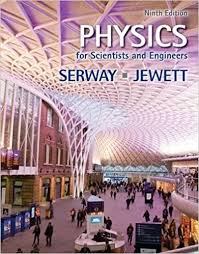Description
Test Bank For Adolescence 10th Edition Laurence Steinberg
1. Which of the following is not one of the areas of fundamental change in adolescence?
A. biological
B. social
C. conceptual
D. cognitive
2. Kaji, a 16-year-old male, has gone through the rite of passage and is now considered a warrior by his tribesmen. This change in Kaji’s role and status may be referred to as:
A. status offense.
B. scarification.
C. social redefinition.
D. inventionist.
3. The universal process through which an individual’s position or status is changed by society is called:
A. collective efficacy.
B. social redefinition.
C. social specification.
D. self-image stability.
4. Today, people go through ______ earlier than 100 years ago, but tend to stay in ______ longer.
A. puberty; school
B. marriage; school
C. school; puberty
D. school; marriage
5. In contemporary America, the process of social definition, which typically begins at age 15 or 16, is something that occurs over:
A. a relatively long period of time.
B. a few days.
C. a few days for males and a relatively longer time for females.
D. a relatively short period of time.
6. Compared to 100 years ago, the adolescent period has been _____ and the transition into adulthood _____.
A. shortened; abbreviated
B. lengthened; prolonged
C. shortened; more continuous
D. lengthened; abbreviated
7. Notable contributing factors to the elongation of adolescence compared to previous eras include all except which of the following:
A. earlier onset of puberty.
B. later entry into adult work roles.
C. later entry into adult family roles.
D. later development of emotional maturity.
8. Jeffrey Arnett, the psychologist who created the term emerging adulthood, believes that the developmental period between adolescence and adulthood (emerging adulthood):
A. exists in all cultures.
B. exists in almost every culture.
C. exists in very few cultures.
D. exists wherever there is a large discrepancy between the rich and the poor.
9. Psychologist Jeffery Arnett has suggested that 18- to 25-year-olds are caught between adolescence and adulthood in “emerging adulthood,” which is characterized by all but which of the following?
A. functioning as an independent person
B. exploring possible identities before making permanent choices
C. the subjective feeling of emotional immaturity
D. the subjective feeling that life is full of possibilities
10. Jacob is looking forward to the upcoming presidential election because he is now able to cast his vote. Based on your knowledge of the social redefinition of adolescence, what has Jacob attained?
A. emerging adulthood
B. juvenile attainment
C. quincea–era
D. the age of majority
11. Dr. Jones argues that adolescence is primarily a social invention rather than a biological or cognitive phenomenon. Her view that the broader environment influences our conception of adolescence is most in line with the:
A. Piagetian perspective.
B. psychometric perspective.
C. inventionist perspective.
D. contextual perspective.
12. Which of the following statements about the inventionist perspective is true?
A. Adolescence is a separate period that has been largely determined by the broader social environment.
B. Adolescence is driven by the physiological changes of puberty.
C. The cognitive advances of adolescence are what make this period distinct from all others.
D. Adolescence is not a distinct period in the life cycle and should not be regarded as such.
13. Among those who study adolescence, an inventionist is one who:
A. develops new products aimed predominantly at the adolescent population.
B. argues that adolescence as a period in the life cycle is mainly a social invention.
C. believes that many of the problems in adolescence are merely invented by the popular press.
D. believes that adolescents need to be kept away from the labor force for their own safety.
14. Before the Industrial Revolution, the term child referred to:
A. ages 3-12.
B. ages 5-10.
C. anyone under age 18 or 21.
D. ages 3-25.
15. According to the inventionist theory, adolescence was not considered a distinct transitional period until:
A. the publication of Seventeen magazine.
B. the creation of child labor laws.
C. the industrial revolution.
D. It has always been recognized as a distinct part of development.
16. In the 19th century, what distinguished children from adults?
A. what job they performed
B. whether they owned property
C. marital status
D. religious confirmation
17. The term adolescent became widely used at what time?
A. since the 15th century
B. since the 18th century
C. since the 19th century
D. during the 20th century
18. Which of the following was not an outcome of the Industrial Revolution?
A. a shortage of job opportunities
B. the lengthening of schooling for adolescents
C. an increase in crime
D. increased opportunities for adolescents in the workplace
19. The status of adolescents as full-time students arose as a result of:
A. the Industrial Revolution.
B. increases in scientific knowledge.
C. political changes resulting from the Civil War.
D. the advent of technical careers.
20. Before industrialization, the term youth referred to:
A. all children.
B. ages 12-24.
C. ages 10-18.
D. ages 3-12.
21. Which of the following contributed to the invention of the teenager?
A. industrialization
B. economic freedom
C. higher education
D. student activism
22. Today, adolescence has been redefined as a time of _____, rather than _____.
A. participation; preparation
B. preparation; participation
C. working; schooling
D. apprenticeship; autonomy
23. The Boy Scouts is an example of an organization that grew out of the _____ school of thought.
A. Revolutionary
B. Piagetian
C. child protectionist
D. inventionist
24. During the industrial revolution, child protectionists argued that:
A. a separate justice system must exist for juveniles.
B. adolescents needed parental permission to marry.
C. young people needed to be kept away from the labor force for their own good.
D. adolescent music was too controversial and needed to be censored
25. Late 19th-century adolescents spend _____ time working with their parents and _____ with their peers, being educated or prepping for the future.
A. less, more
B. less; less
C. more; less
D. more; more
26. Popularized about 50 years ago, this expression refers to young people in a more frivolous and lighthearted manner than the term adolescent.
A. youngster
B. youth
C. teenager
D. punk
27. Which of the following statements is true about Arnett’s concept of emerging adulthood?
A. It is seen more commonly among politically conservative youth.
B. Not all people in their mid-20s fit the profile.
C. It is positively associated with economic pressures to support a family.
D. It exists in all cultures.
28. Which of the following was not a result of industrialization?
A. new patterns of work
B. less time in school
C. increased school preparation
D. less time working with family members
29. Which of the following did not contribute to the redefinition of the term youth?
A. increased materialism among college students
B. a growing college population
C. a rise in student activism
D. changes in attitudes and values among college students
30. Which group of individuals is likely to describe themselves as individuals who are in many ways more mature than adolescents, but not as mature as adults?
A. teenagers
B. college students
C. individuals in their 20s
D. emancipated minors





Be the first to review “Test Bank For Adolescence 10th Edition Laurence Steinberg”